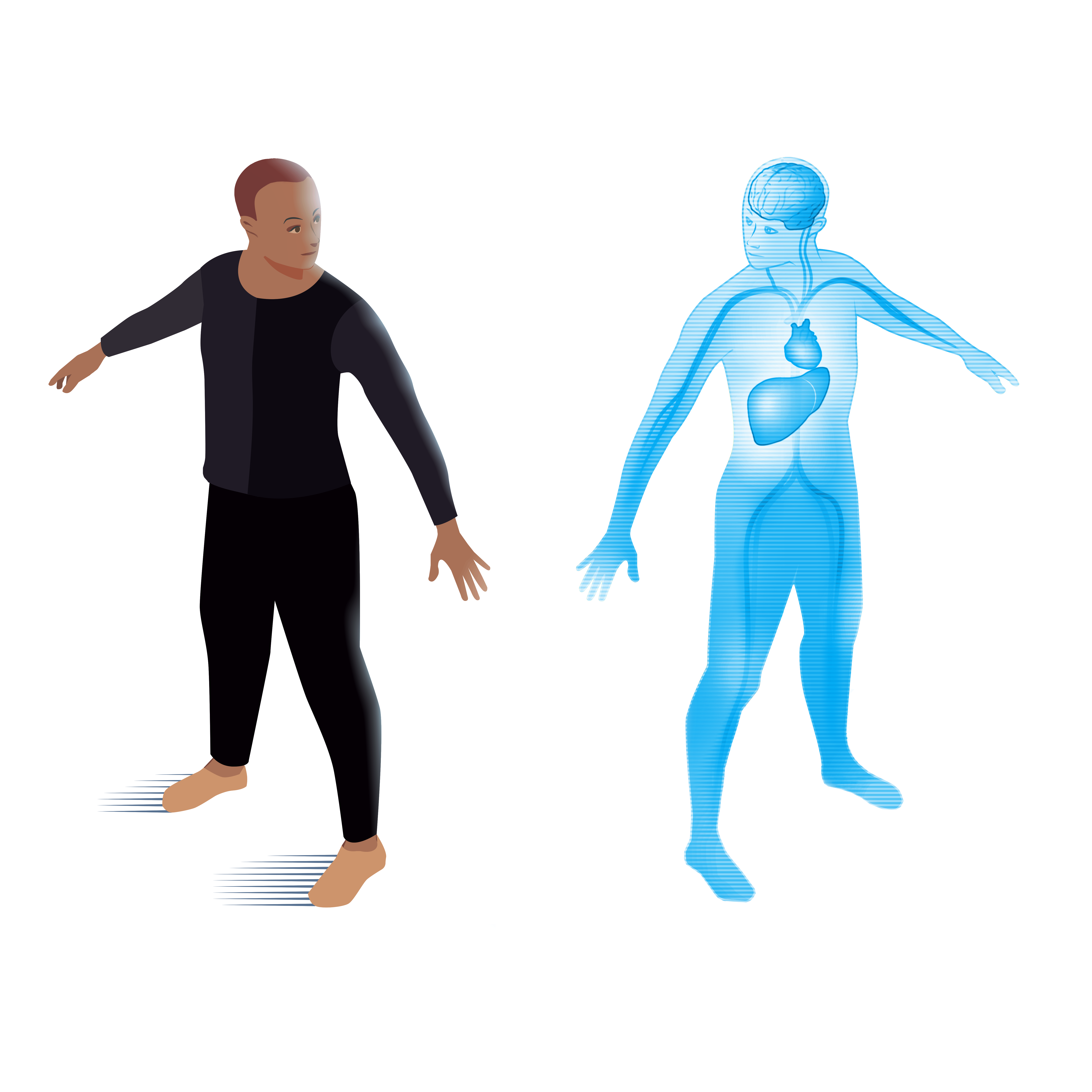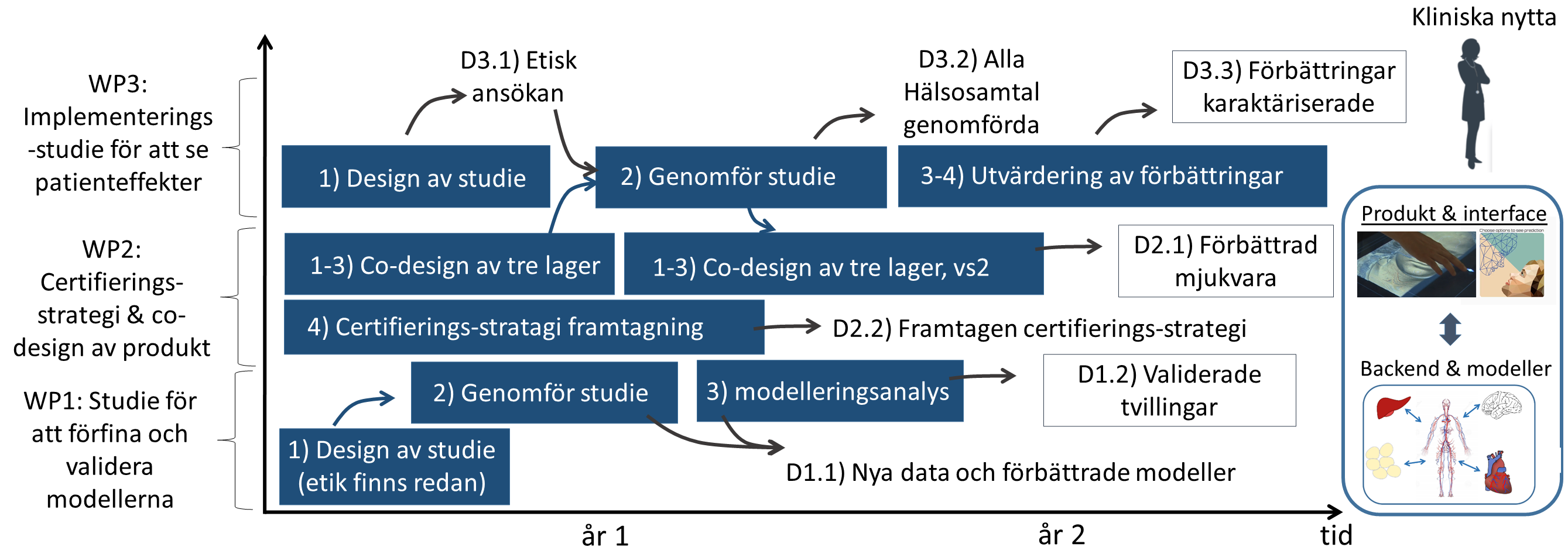Digital twins in healthcare: model validation, co-design, and clinical evaluation

During the last 20 years, we have developed and integrated mathematical models for all of the main organs in the human body into an interconnected model for the body as a whole. These models can become personalized by tuning them to person-specific data. Such personalized models for the human body are what we refer to as digital twins. This differs from almost all other available digital twin models, since other twin models are only describing a single organ, or only a specific aspect (such as glucose and insulin on the whole-body level). Our digital twin models describe and focus on both what happens inside organs, and on what happens in the interplay between these organs. In this way, our digital twin models are multi-organ. Our digital twin models are also multi-timescale (from ms to years) and multi-level (intracellular to whole-body level).
In this project financed by VINNOVA, MedTech4Health, and Swelife, we take these digital twins forward towards end-usage in the clinic, via three concrete step:
Validation of model predictions: Using new longitudinal studies, that we ourselves perform, we will measure what happens in the body with a high time-resolution, in response to well-defined behaviors of the subjects. We use a combination of e.g. continuous glucose sensors, blood samples, and advanced MRI technologies to measure a wide variety of different processesgoing on in the human body. We then hold up these continuous changes against corresponding model predictions, to see if they validate the twin models, or if they need to be further refined. We have so far used this, to validate our meal response predictions in response to changes in diet composition and fasting schedules (Silfvergren et al, PLoS Comp Biol, 2022).
Co-design of new front-end interfaces: In a series of steps, we go from needs in (clinical) end-usage to design and implementation of new front-ends, that allow users to interact with digital twins. First, we do in-depth interviews with users, such as nursesdoing preventive health conversations, teachers teaching medical concepts, etc. Second, we create sketches and rough ideas of designs, which end-users and technology developers discuss around in joint workshops. Third, these sketches are made even more concrete in design softwares, and finally, these designs are further refined and implemented in languages such as flutter. We havenow created such interfaces for usage in the preventive health conversation, and have early designs also for pedagogical applications, both in structured and unstructured teaching. We also present dancing digital twins in connection to lecture performances, where biomedical engineering discussions are mixed with music and dancing (as e.g. in the recent VPH conference).
Assessment of clinical impact: We plan to also test these twins in actual healthcare. In particular, we will test how clinical health conversations, done in e.g. primary care clinics, can be augmented and improved, by doing with a digital twin present. We will examine things such as improvements in understanding of key concepts, in motivation, in behavior, and in clinical health parameters.

Key references
An organ-based multi-level model for glucose homeostasis: organ distributions, timing, and impact of blood flow. Herrgårdh Ta, Li H, Nyman E, Cedersund G. Front Physiol. 2021, 12:619254. Doi: 10.3389/fphys.2021.619254
Digital twin predicting diet response before and after long-term fasting. Oscar Silfvergren, Christian Simonsson, Mattias Ekstedt, Peter Lundberg, Peter Gennemark, Gunnar Cedersund, PLoS Comp Biol, 2022, In press, doi: 10.1371/journal.pcbi.1010469
Herrgårdh T b, Madai VI, Kelleher JD, Magnusson R, Gustafsson M, Milani L, Gennemark P, Cedersund G. Hybrid modelling for stroke care: Review and suggestions of new approaches for risk assessment and simulation of scenarios. Neuroimage Clin. 2021, 31:102694. Doi: 10.1016/j.nicl.2021.102694
Digital twins and hybrid modelling for simulation of physiological variables and stroke risk. Tilda Herrgårdh, Elizabeth Hunter, Kajsa Tunedal, Hakan Örman, Julia Amann, Francisco Abad Navarro, Catalina Martinez-Costa, John D Kelleher, Gunnar Cedersund doi: 10.1101/2022.03.25.485803 bioRxiv, 2022
